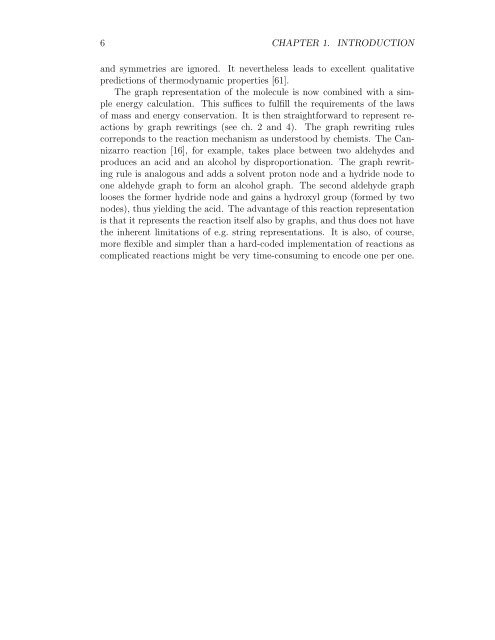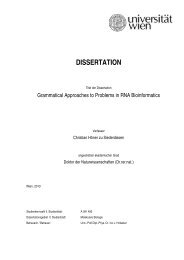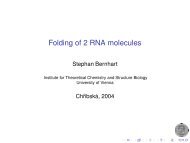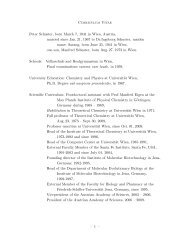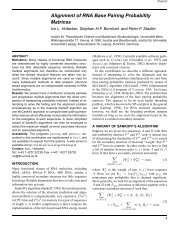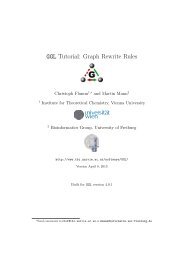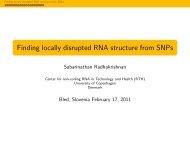A Toy Model of Chemical Reaction Networks - TBI - Universität Wien
A Toy Model of Chemical Reaction Networks - TBI - Universität Wien
A Toy Model of Chemical Reaction Networks - TBI - Universität Wien
You also want an ePaper? Increase the reach of your titles
YUMPU automatically turns print PDFs into web optimized ePapers that Google loves.
6 CHAPTER 1. INTRODUCTION<br />
and symmetries are ignored. It nevertheless leads to excellent qualitative<br />
predictions <strong>of</strong> thermodynamic properties [61].<br />
The graph representation <strong>of</strong> the molecule is now combined with a simple<br />
energy calculation. This suffices to fulfill the requirements <strong>of</strong> the laws<br />
<strong>of</strong> mass and energy conservation. It is then straightforward to represent reactions<br />
by graph rewritings (see ch. 2 and 4). The graph rewriting rules<br />
correponds to the reaction mechanism as understood by chemists. The Cannizarro<br />
reaction [16], for example, takes place between two aldehydes and<br />
produces an acid and an alcohol by disproportionation. The graph rewriting<br />
rule is analogous and adds a solvent proton node and a hydride node to<br />
one aldehyde graph to form an alcohol graph. The second aldehyde graph<br />
looses the former hydride node and gains a hydroxyl group (formed by two<br />
nodes), thus yielding the acid. The advantage <strong>of</strong> this reaction representation<br />
is that it represents the reaction itself also by graphs, and thus does not have<br />
the inherent limitations <strong>of</strong> e.g. string representations. It is also, <strong>of</strong> course,<br />
more flexible and simpler than a hard-coded implementation <strong>of</strong> reactions as<br />
complicated reactions might be very time-consuming to encode one per one.


